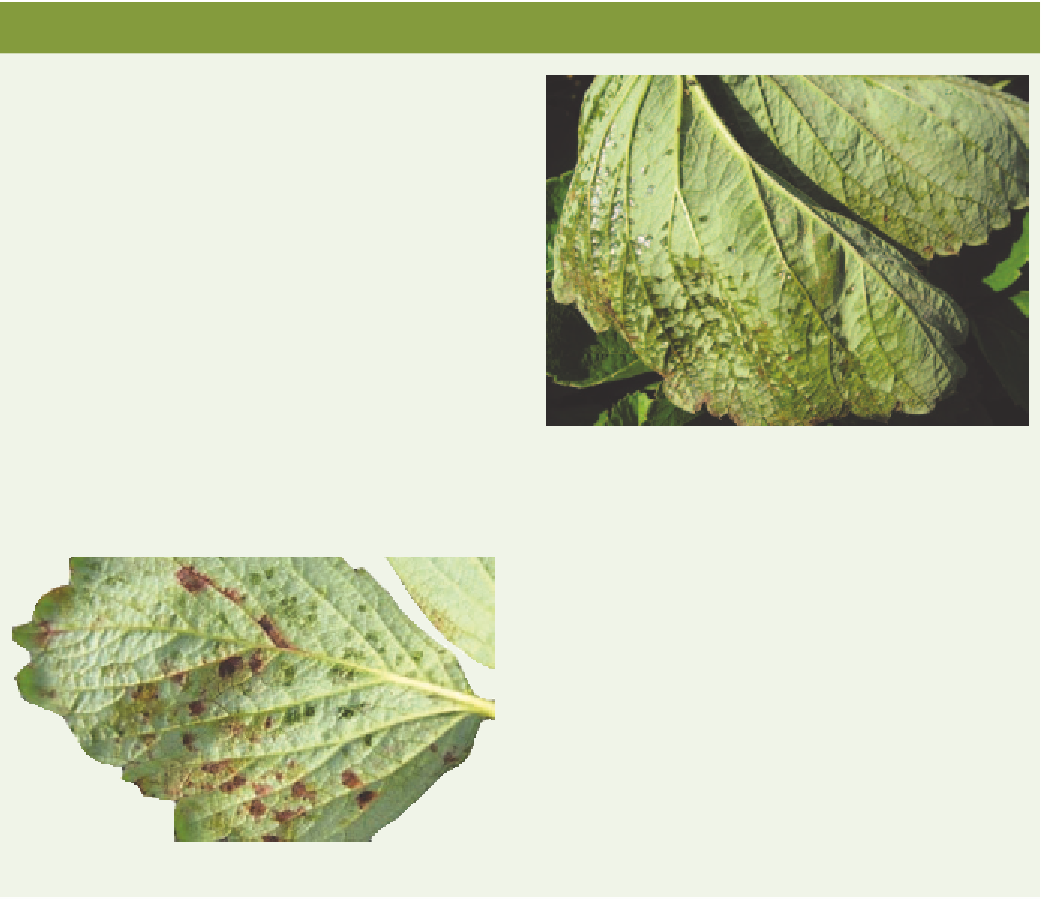Agriculture Reference
In-Depth Information
ANGULAR LEAF SPOT - BIOSECURITY THREAT
Cause
The bacterium
Xanthomonas fragariae
.
Symptoms
The disease appears on leaves as small 1-4 mm angular,
water-soaked spots initially on the lower surface. The
spots are translucent when held to the light. Spots later
enlarge and coalesce becoming visible on the upper side
of the leaf. A bacterial exudate may be visible under
high humidity. Dead tissues drop out of the leaf, leaving
a raggy appearance. Flowers, but not fruit, are affected.
Source of infection and spread
Worldwide, the disease is distributed in planting material.
Local dispersal is by water splash and wind movement.
The disease is favoured by low to moderate temperatures
and high relative humidity. Strawberry germplasm can
Fig 18.2 Angular leaf spot lesions are contained between the
leaf veins.
enter Australia only as plantlets in tissue culture from
approved sources and then undergo post-entry quarantine.
Importance
Angular leaf spot is a biosecurity threat to the
Australian industry.
The best management tool is to exclude the pathogen.
Strict entry requirements apply.
What to do if you suspect angular leaf spot
This pathogen is a biosecurity risk to Australia. Any
suspected affected plants should be reported to the
nearest Department of Primary Industries or the Plant
Health Australia hotline (1800 084 881).
Fig 18.1 Angular leaf spot on the underside of a strawberry leaf
showing small, angular lesions.
Fig 18.3 Strawberry lethal yellows showing stunted plants
and distorted leaves.
Fig 18.4 Plants affected by green petal produce flowers at the petals
and the fruit look like a head of mini broccoli.













